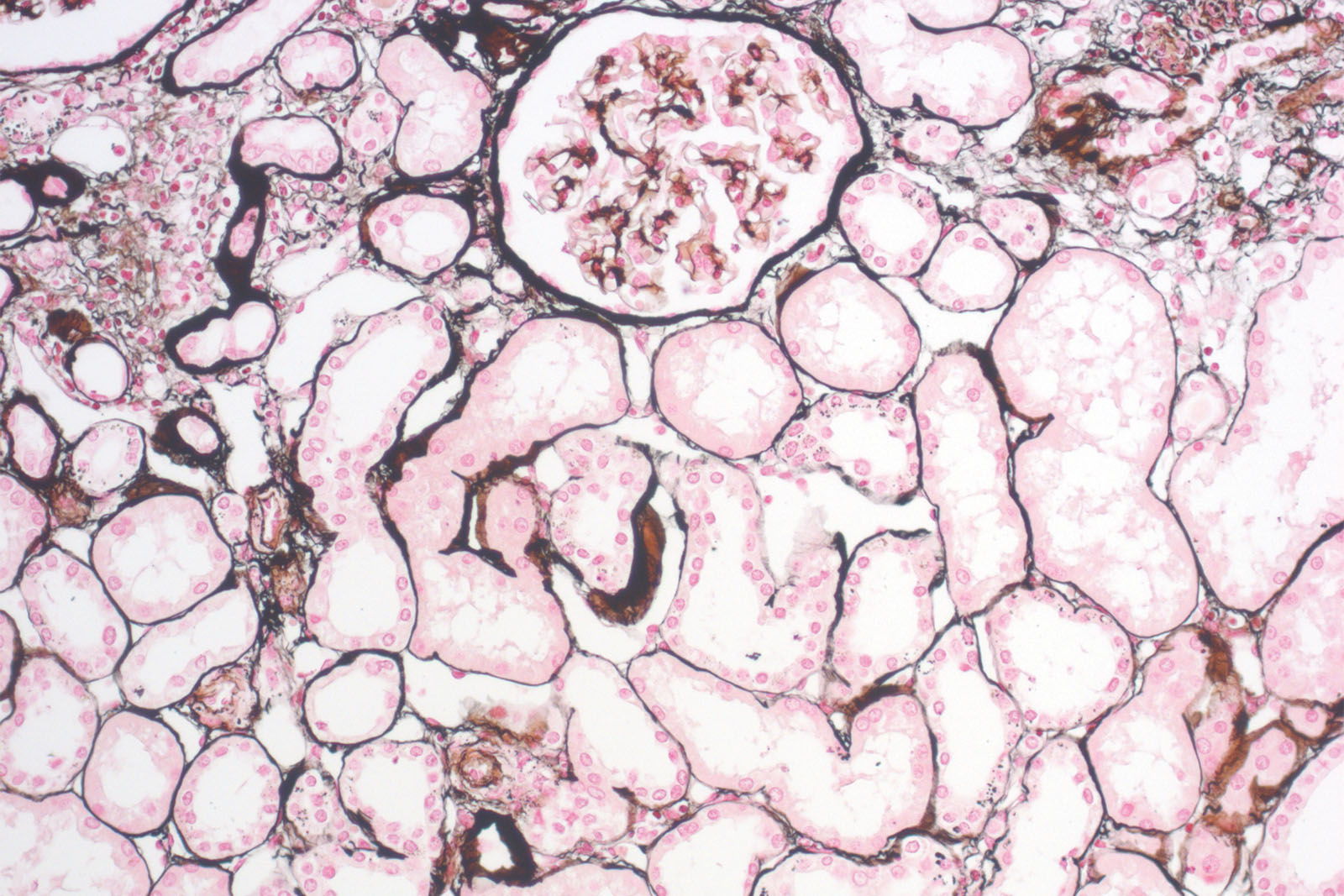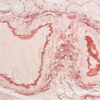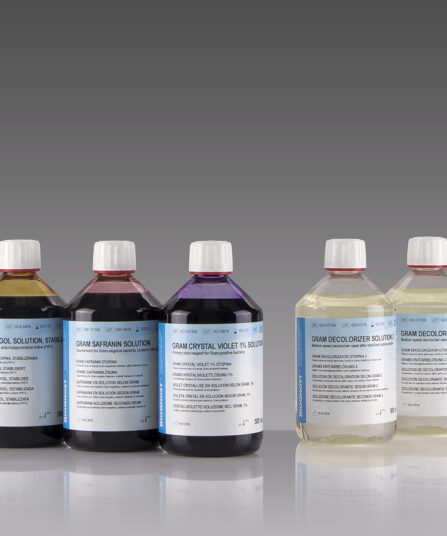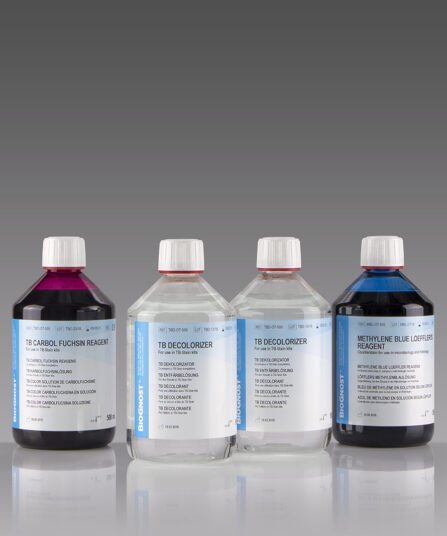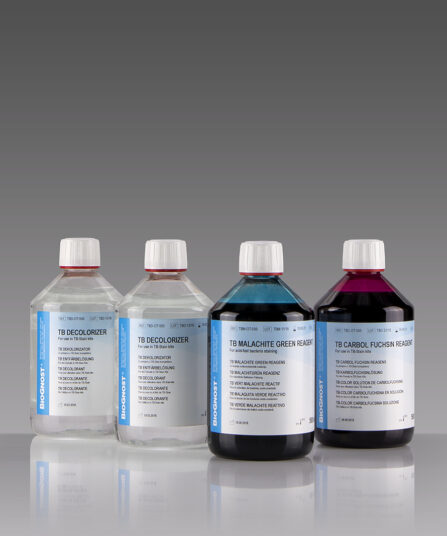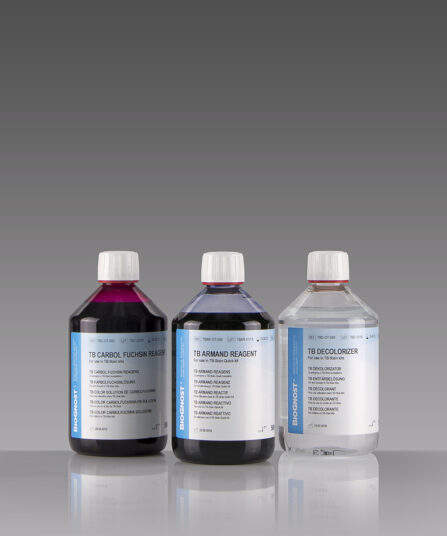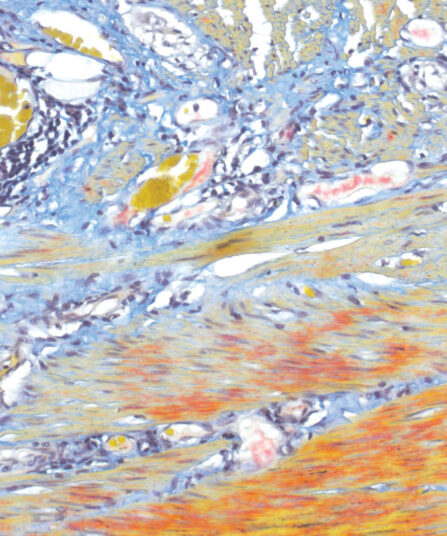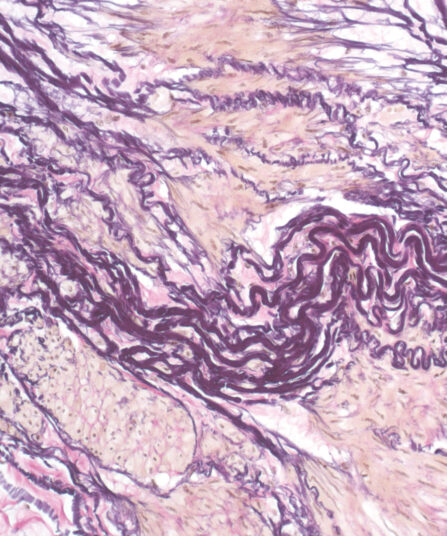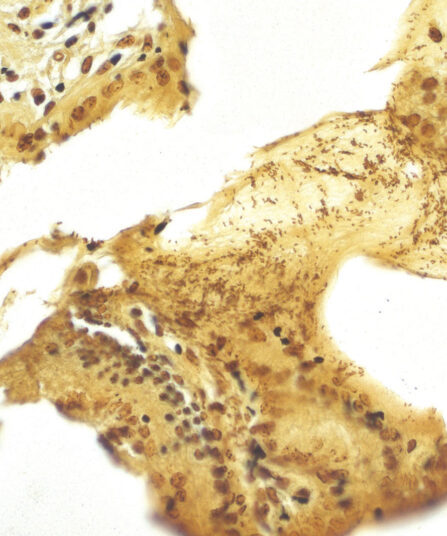P.A.S.M. / Jones kit is used in histology for visualizing argentaffin structures, especially kidney membranes, but also fungi and certain pathogen organisms. Staining procedure starts with periodic acid solution being used to oxidize 1,2-glycols to aldehydes. During incubation in silver-methenamine-borate working solution aldehydes are reduced and at the same time cause reduction of silver ions to metallic silver that manifests as brown to black structures on the section. This is followed by toning the solution with gold chloride solution that additionally improves staining intensity of target structures (fungi, basal membranes and others), and it reduces background staining. Excessive unbound silver-gold bonds is removed by rinsing the section with sodium thiosulfate solution. Finally, the sections are exposed to Nuclear Fast Red (Kernechtrot) counterstain that stains background structures red; that in turn creates clear and visually rich contrast to target structures (coloured in brown-black).
This is new and improved formulation for P.A.S.M./Jones staining. Kit is stable at room temperature, do not store at lower temperature!
P.A.S.M. / Jones kit, stabilised
Seven-reagent Periodic Acid Silver Methenamine kit for staining kidney glomerular basement membranes. Kit includes red counterstain which provides visually rich contrast to target structures stained black.
Description
Additional information
| Size | |
|---|---|
| Brand | |
| Stain pack | |
| Stain Category | Muscle and Connective Tissue |
Related products
Stain Kits
BioGram 4 kit
Four-reagent kit for identification of bacteria according to Gram. Kit contains Gram Crystal Violet 1% solution, stabilized Gram Lugol solution, double amount of Gram Decolorizer solution 2 and Gram Safranin solution as counterstain.
5×100 ml bottles
Stain Kits
TB-Stain Hot Kit
Three-reagent kit for staining acid-fast bacteria. Contains TB Carbol Fuchsin reagent, double amount of TB Decolorizer and Methylene Blue Loeffler’s reagent as counterstain.
4 x 100ml bottles.
Stain Kits
TB-Stain Cold Kit
Three-reagent kit for staining acid-fast bacteria according to Kinyoun. Contains TB Carbol Fuchsin reagent, double amount of TB Decolorizer and TB Malachite Green reagent as counterstain.
4 x 100ml bottles.
Stain Kits
TB-Stain Quick Kit
Three-reagent kit for rapid staining of acid-fast bacteria using Kinyoun-Gabbett method. Contains TB Carbol Fuchsin reagent and TB Armand reagent as counterstain.
3 x 100ml bottles.
Martius Scarlet Blue (MSB) kit, 6x100ml+1x250ml
Seven-reagent kit used for fibrin visualisation, especially of older clusters. This method is a modification of Masson Trichrome and is ideal for studying connective tissue and vascular pathology.
Stain Kits
Elastica-Van Gieson kit
Four-reagent kit for staining elastic fibres and differentiation between elastic tissue, collagen and other types of connective tissue. The rapid method enables a satisfactory result with shorter section staining time.
Stain Kits
Warthin Starry kit
Five-reagent kit for staining Spirochaeta, Helicobacter pylori, Microsporidia and Legionella pneumophila. The kit contains 12 jars with gelatine that enables both incubation and staining of sections, as well as other reagents that enable precipitation of silver on the bacterial surface. The bacteria are found in the mucus of the surface epithelium, in the apical gastric glands and in the gastric mucosa.
Stains Reagents And Dyes

